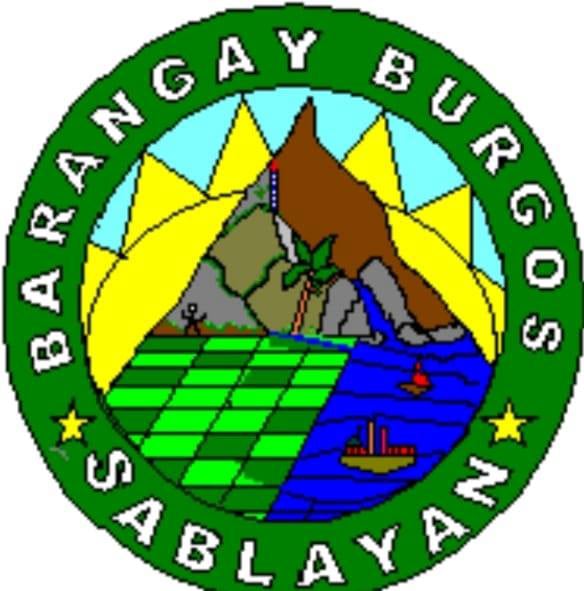Barangays > Burgos

|
Brief History |
During the American regime, the indigenous people belonging to the Batangan or Tau-Buhid tribe established a settlement near the bank of a river, almost fifteen kilometers north of Calintaan. They named their settlement Buswangan, since in their dialect, the word means a flowing river. The patches of kaingin near their settlement were planted with rootcrops, palay and corn.
The leader of the indigenous people in Buswangan were Victor Baclawman and Gorio Yakama. Since they were good leaders, the families of indigenous people in this place increased in number. Later on, Buswangan became a sitio of Barrio Ligaya.
In 1931, a group of Visayan settlers led by Herbacio Damiray arrived in this sitio. They cleared the forested area and planted it with palay and corn. They peacefully co-existed with the indigenous people in this place.
When World War II broke out, the Visayan settlers and the indigenous people hid in the forested hills of this sitio. The Japanese soldiers who sometimes hunted the group of guerrillas headed by Sgt. Sergio Barretto did not discover their hiding place
Five years after the war, the first group of farmers from the Ilocos Region, composed of the families of Adsuara, Obtinalla, Castil, Nagal, Bergonia, Perlata and Fabrigas arrived in Buswangan. The once forested wide plain at the sitio of the indigenous people was converted into ricefields and cornfields.
In 1952, the Tau-Buhid left the plains of Buswangan. They established another settlement on the distant hills of the sitio. Since their new settlement was also near the river, they again called it Buswangan.
In 1954, the Visayan and Ilocano settlers of Buswangan decided to change the name of the sitio. They agreed to name it Burgos, in honor of the three patriotic Filipino priests who were executed by the Spaniards.
The inhabitants of Burgos sent a petition to the municipal council of Sablayan, requesting that their sitio be created as a barrio. In 1956, members of the municipal approved the petition.
One of the first action of the barrio council was to request the national government that the portion of the wide agricultural land reserved by the late President Ramon Magsaysay for the rehabilitation of prisoners in Sablayan Penal Colony & Farm which they have cleared and cultivated be distributed to them. After experiencing much tension brought by years of negotiating with the proper authorities, the parcels of land which the petitioners tilled were awarded to them.
Through cooperative labor, the farmers were able to build an irrigation system for their farm. The said irrigation system was improved by the National Irrigation Administration (NIA).
During martial law period, the provincial government widened and improved the highway linking Mamburao to San Jose. The said major thoroughfare passes through Burgos. In addition, the wooden bridge over Buswangan River was replaced by a concrete one. Due to these improvements, the number of buses and passenger jeeps passing through this barangay increased.
The leaders who served as teniente del barrio of Burgos were Andres Adsuara, Gregorio Pascua and Macario Bergonia. Those who served as barangay captain were Juancho Dangeros, Domingo Laderas, Eusebio Lampa, Conrado Jubilado, Tomoy Nilo, Benjamin Morena, Francisco Obtinalla and Plaridel Daprosa. The leader of the barangay at present, Brgy. Captain Aurora Castil, has served Burgos before but was again entrusted with the same responsibility by his barrio mates.
Since many indigenous people belonging to the Tau-Buhid tribe are living on the hills of Burgos, the inhabitants of the barangay give them a chance to be represented in the barangay council.


